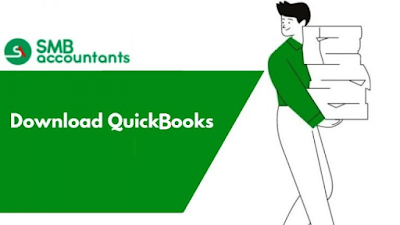How to Identify, Prevent and Fix QuickBooks Corrupted File?
Undoubtedly, QuickBooks stands out as the premier accounting software currently sought after. Entrepreneurs worldwide utilize this software for tasks ranging from payments and bill management to tax-related functions and more. If you're a QuickBooks user, the term "Company File" is likely familiar to you, and you may also be acquainted with the common glitches and errors associated with Company Files that users often face.
What is Company File?
Essentially, the QuickBooks Company file contains the financial records of a business. For entrepreneurs who are new to QuickBooks, creating a company file is a fundamental first step. However, this company file may encounter various issues, and one common issue is a corrupted company file.
How to Identify Data Corruption?
Before resolving the problem, it's crucial to pinpoint the issue. Users can analyze transactions or items through a log, taking note of indications and issues related to items and transactions. Once the examination is finished, the user can proceed to delete the corrupted file. Following this, they should continue down the log, addressing each item until the file is verified. It's important to note that this process follows the completion of the previous Verify Data and Rebuild Data steps. Additionally, users need to review the logs generated by QuickBooks software to verify the data.
How can I find out if the Company File is Corrupt?
To seek a solution to a problem, it is crucial to initially delve into and identify the issue. Therefore, before seeking an optimal solution, the user must verify whether the company file is corrupted. You might wonder how to determine if the company file is corrupted or not. To assist you, we've outlined the symptoms of a corrupted company file:
- If a discrepancy arises on the balance sheet during an audit,
- If QuickBooks software abruptly shuts down, possibly due to human errors,
- Likewise, if the transaction list is absent from the software, In situations where unpaid bills and invoices are erroneously marked as paid on the balance sheet,
- And when the transaction history reflects a negative balance.
For users to identify the error, they must keep an eye on their software, and any unusual activity is more than enough to identify the real problem.
The Causes of QuickBooks company file corruption
There could be various reasons contributing to this problem, and recognizing these factors can aid in both preventing and resolving the issue. Let's explore some of the causes of data damage:
- Extended usage on QuickBooks beyond standaard hours.
- If the RAM fails to automatically address the problem and lacks sufficient memory.
- Potential threats from virus attacks and unauthorized users capable of erasing the database.
- Issues related to cables, internet connectivity, and the hard disk. Improper shutdown of the PC, such as directly turning off the main switch, which can result in data corruption.
How to Prevent Corruption of QuickBooks Files?
1. Make Regular Backup of Your Company File
While not a direct method to prevent QuickBooks file corruption, regularly backing up your QuickBooks Company file is a valuable practice to safeguard against data loss. Consistent backups ensure the ability to swiftly restore your data in the event of company file corruption. It's crucial to maintain backup copies on multiple sources, guaranteeing the availability of a restorable copy even if one of the backup files becomes corrupted.
You have the option to manually create a backup or utilize Intuit® Data Protect for automated online backups of your QuickBooks data Services.
2. Reduce Your QuickBooks File Size
As you input transactions into QuickBooks, your company file can expand significantly in size. Interestingly, even when transactions are deleted, the file size may still increase. This occurs because deleted transactions are merely marked as such in the database, and the space allocated for these transactions remains unused within the file.
A sizable company file is susceptible to corruption, potentially leading to data damage. To mitigate this, it's advisable to reduce the file size. This can be achieved by:
- Creating a new company file.
- Utilizing the QB Condense Data utility.
- Truncating the QBW file by eliminating transactions for a specific period. However, QuickBooks doesn't provide truncation as a service. To perform this task, you'll need to send the file to a third-party vendor for truncation.
3. Verify Your QuickBooks File
Utilize the integrated 'Verify Data' utility in QuickBooks to detect potential data issues within a company file. Running this utility enables you to uncover discrepancies on invoices or bills, identify missing transactions, and pinpoint deposited payments that may not appear in the 'Payments to Deposit' window, among other potential issues.
To use the Verify Data tool, follow these steps:
- Open your QuickBooks Desktop application, go to File, and hover over Utilities.
- Select Verify Data. Click OK when the message "QuickBooks detected no problem with your data" appears. This indicates that there are no issues with the QB data file, and you can proceed to use it.
- If the message "Verifying finds some problem with your company file" appears, click on View Errors.
- To address the Company file issues, click on Rebuild Now.



Comments
Post a Comment